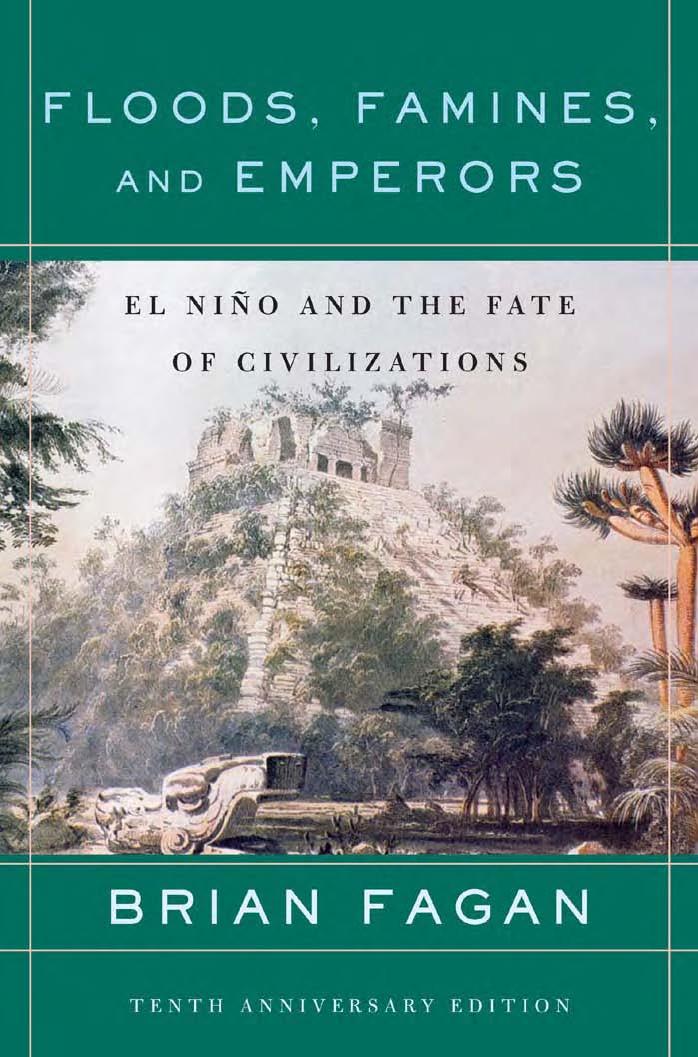Floods, Famines, and Emperors: El Nino and the Fate of Civilizations by Brian Fagan

Author:Brian Fagan [Fagan, Brian]
Language: eng
Format: epub, pdf
ISBN: 9780786727681
Google: fFdAjEqG4tcC
Published: 2009-02-10T02:53:31.274000+00:00
CHAPTER EIGHT
The Classic Maya Collapse
Such was the scattering of the work, the human design. The people were ground down, overthrown. The mouths and faces of them were destroyed and crushed.
âPopol Vuh, Quiche Maya Book of Counsel
Lake bed deposits in Mexicoâs Quintana Roo tell the same story as the Quelccaya ice cap in the Andes. A severe drought cycle settled over Peru and Central America in the mid- to late-sixth-century A.D. A combination of drought and El Niños nearly destroyed the Moche. Years of drought in the tropical southern lowlands of Guatemala and Mexico caused economic and social disruption at a time of rapid population growth. Like the Moche, the Maya survived, but the environmental writing was on the wall. Three centuries later their civilization lay in ruins.
The ancient Maya were among the most flamboyant and longest-lasting of all pre-Columbian civilizations. Once humble village farmers, the Maya transformed their low-lying tropical homeland into a landscape of great cities ruled by powerful lords. Between the last few centuries before Christ and A.D. 900, Classic Maya civilization flourished in the southern lowlands of Mexico, Guatemala, and Honduras. The collapse came suddenly. The great ceremonial centers of the Petén and the southern lowlands were abandoned, and huge portions of the region were deserted, never to be reoccupied. In the city of Tikal alone, the population of more than fifty thousand declined to just one-third of that. The survivors clustered in the ruins of the great masonry structures and tried to retain a semblance of their earlier life. Within a few generations, even they were gone.
The âClassic Maya collapseâ is one of the great controversies of archaeology, but there is little doubt that droughts, fueled in part by El Niño, played an important role in the disaster.
Download
Floods, Famines, and Emperors: El Nino and the Fate of Civilizations by Brian Fagan.pdf
This site does not store any files on its server. We only index and link to content provided by other sites. Please contact the content providers to delete copyright contents if any and email us, we'll remove relevant links or contents immediately.
| Africa | Americas |
| Arctic & Antarctica | Asia |
| Australia & Oceania | Europe |
| Middle East | Russia |
| United States | World |
| Ancient Civilizations | Military |
| Historical Study & Educational Resources |
The Bomber Mafia by Malcolm Gladwell(1184)
Submerged Prehistory by Benjamin Jonathan; & Clive Bonsall & Catriona Pickard & Anders Fischer(1162)
Facing the Mountain by Daniel James Brown(1136)
The Dawn of Everything by David Graeber & David Wengrow(1114)
The Way of Fire and Ice: The Living Tradition of Norse Paganism by Ryan Smith(1034)
Wandering in Strange Lands by Morgan Jerkins(1020)
Tip Top by Bill James(1004)
Driving While Brown: Sheriff Joe Arpaio Versus the Latino Resistance by Terry Greene Sterling & Jude Joffe-Block(1003)
Evil Geniuses: The Unmaking of America: A Recent History by Kurt Andersen(1001)
Red Roulette : An Insider's Story of Wealth, Power, Corruption, and Vengeance in Today's China (9781982156176) by Shum Desmond(1001)
F*cking History by The Captain(969)
It Was All a Lie by Stuart Stevens;(944)
White House Inc. by Dan Alexander(908)
Evil Geniuses by Kurt Andersen(903)
Treasure Islands: Tax Havens and the Men who Stole the World by Nicholas Shaxson(881)
American Dreams by Unknown(860)
American Kompromat by Craig Unger(850)
The Fifteen Biggest Lies about the Economy: And Everything Else the Right Doesn't Want You to Know about Taxes, Jobs, and Corporate America by Joshua Holland(818)
The First Conspiracy by Brad Meltzer & Josh Mensch(814)
